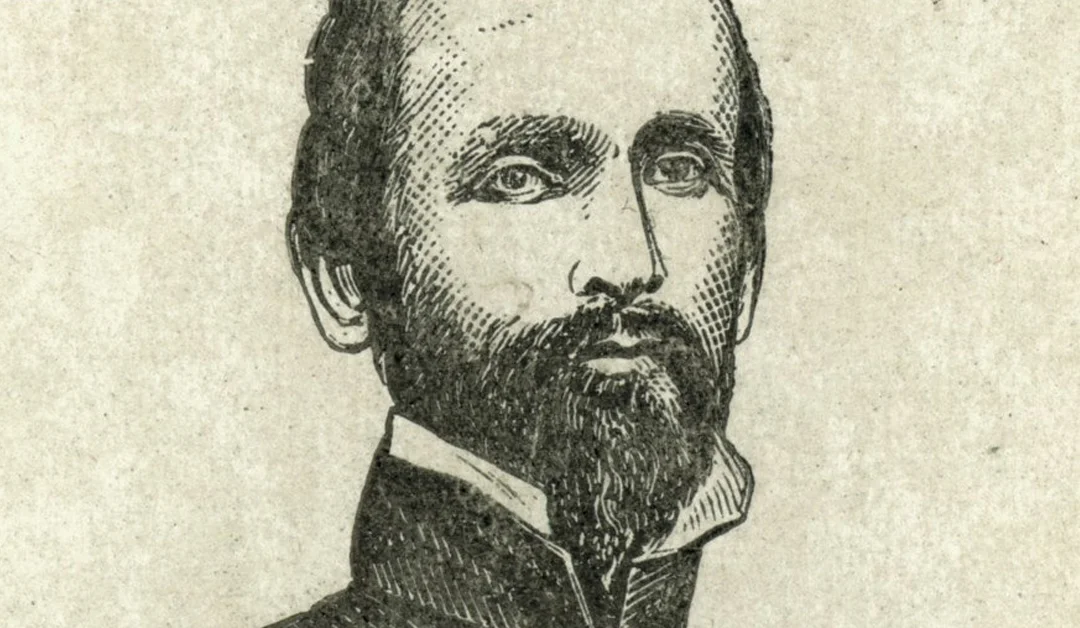Richard Brooke Garnett was a Virginia-born military officer who fought for the Confederate Army during the American Civil War. Garnett was born on November 21, 1817, to a wealthy planter, William Henry Garnett, and his wife, Anna Maria Brooke. He attended the Norfolk Academy as a young boy before enrolling in the United States Military Academy at West Point in 1837. Garnett graduated from West Point in 1841, ranked 29th in his class of 52 cadets.
After graduation, Garnett was commissioned as a brevet Second Lieutenant and assigned to the 6th U.S. Infantry Regiment. He served with the 6th U.S. Infantry Regiment in the West for 20 years, campaigning against Native American Indians and helping settle territorial disputes. Garnett was promoted to captain in the U.S. Army in 1855. However, he resigned his commission in May 1861 to fight for his home state of Virginia in the Civil War.
Garnett quickly rose through the ranks of the Confederate Army, advancing to the level of Lieutenant Colonel of Cobb's Georgia Legion by September 1861. On November 14, 1861, Garnett was promoted to Brigadier General in command of the 1st Brigade of the Valley District of the Confederate Army of the Potomac. However, he ran into trouble at the First Battle of Kernstown when he ordered a retreat without authorization from General Stonewall Jackson. Jackson arrested Garnett for "neglect of duty" and relieved him of his command. Court-martial proceedings against Garnett lasted only one day and never rendered a verdict. However, General Robert E. Lee reinstated Garnett on September 5, 1862, and assigned him to the Army of Northern Virginia under the command of General James Longstreet.
Garnett commanded George Pickett's brigade at the Battle of Antietam in September 1862 and assumed permanent command of Pickett's division on November 26, after Pickett was promoted to divisional commander. Garnett did not participate in the Battle of Fredericksburg in December 1862 and was not present at the Battle of Chancellorsville in April and May 1863. Following Stonewall Jackson's death at Chancellorsville, Garnett was a pallbearer at the stricken general's funeral. Garnett's brigade, part of Pickett's division, served as the army's rearguard during General Lee's Second Invasion of the North in June 1863. As a result, Garnett arrived at Gettysburg on the afternoon of July 2, 1863.
On July 3, 1863, Lee selected Pickett's division, which included Garnett's brigade, to participate in the ill-fated assault on Cemetery Ridge, commonly known as Pickett's Charge. Garnett suffered from a fever and an injured leg that prevented him from leading his men on foot. Instead, he led his men into battle mounted on a horse, making him an easy target. During Pickett's Charge at the Battle of Gettysburg, Garnett was mortally wounded, probably by grapeshot. Although Garnett was dressed as a Confederate general, his body was never identified after the fighting at the Battle of Gettysburg. It is possible that Garnett was buried in a mass grave that Union soldiers dug for the Confederates who died at the Battle of Gettysburg. In 1872, the remains from that grave were removed to Hollywood Cemetery in Richmond. How many remain in the mass grave at Gettysburg? On both sides?















0 comments:
Post a Comment